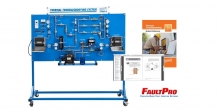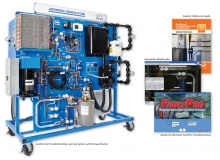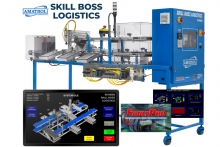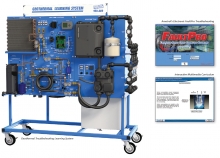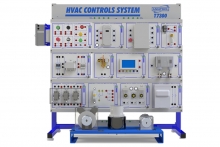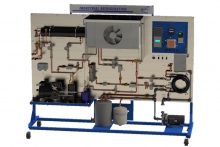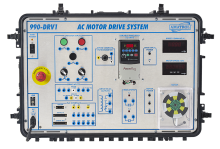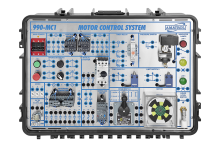Amatrol FaultPro
Amatrol’s FaultPro computer-based fault insertion software is the industry’s only electronic troubleshooting training system. FaultPro allows instructors to instantly set and tailor faults to test a student’s weaknesses and turn them into strengths. The troubleshooting skills taught by FaultPro allow students to solve real-world problems they’ll encounter on the job. FaultPro inserts electronic faults safely, protecting both students and equipment from incurring any damage.
FaultPro comes standard with more than two dozen Amatrol training systems spanning seven different technologies.
-
Item Number:T7082AAmatrol’s Air Conditioning / Heat Pump Troubleshooting Trainer (T7082A) teaches valuable HVAC troubleshooting skills on a hands-on learning system that performs heat pump, air conditioning and refrigeration operation.
-
Amatrol’s FaultPro computer-based fault insertion software is the industry’s only electronic troubleshooting training system. FaultPro allows instructors to instantly set and tailor faults to test a student’s weaknesses and turn them into strengths.
-
Item Number:950-GEO2DAmatrol’s 950-GEO2D Geothermal Troubleshooting Learning System with Desuperheater uses an exposed component layout so that learners can see each component’s role in a geothermal system.
-
Item Number:T7100Amatrol’s Residential Heat Pump Troubleshooting Learning System (T7100) is used to teach hands-on the critical skills HVAC/R technicians need to succeed when working with residential HVAC systems that use a heat pump and traditional ducting. Students will work with real equipment, including a heat pump condenser, heat pump air handler, Wi-Fi-enabled thermostat, fuse box, ducting, and manifold.
-
Item Number:95-MSB3The Amatrol Skill Boss Logistics offers a performance-based assessment for evaluating the skills and competencies of future supply chain automation technicians.
-
Item Number:950-GEO2Amatrol’s 950-GEO2 Geothermal Troubleshooting Learning System is equipped with FaultPro, Amatrol’s premier electronic fault insertion program for teaching troubleshooting skills.
-
Item Number:T7300The HVAC Controls System, T7300, is a comprehensive training solution with features inspired by the 85-MT5 Electric Motor Control Training System. It offers a dual-sided layout with 12 panels (expandable) and incorporates built-in safety mechanisms and optional FaultPro computer-based fault insertion software.
-
Item Number:T7500Amatrol's T7500 Refrigeration Learning System: Comprehensive training in VFD control, data acquisition, troubleshooting, and more, with a curriculum covering electrical components, system operation, controller programming, and airflow measurements.
-
Item Number:990-DRV1FAmatrol's 990-DRV1F features industry-standard components like a Rockwell PowerFlex 4 variable frequency AC drive and a 3-phase AC motor used to teach the fundamentals of configuring and operating an AC drive. The 990-DRV1F uses FaultPro, Amatrol’s electronic fault insertion, to teach motor drive troubleshooting skills, such as drive input, motor input, and drive relay troubleshooting.
-
Item Number:990-MC1FSL
Amatrol’s Portable Electric Motor Control Troubleshooting Training System (990-MC1FSL) features typical industry components like a 3-phase AC squirrel cage motor. It uses 3-phase AC for power and 24 VDC for control, all packed within a space-saving, portable product. The real-world motor control components will prepare learners for work in industries where electric relay control applications are used, like conveyor control and driving large utility pumps. Teach students how to read and interpret ladder diagrams.

